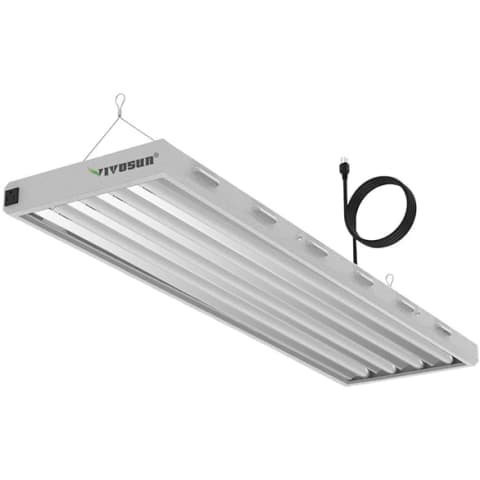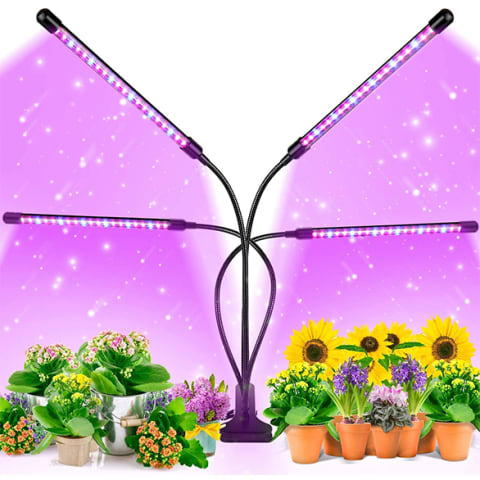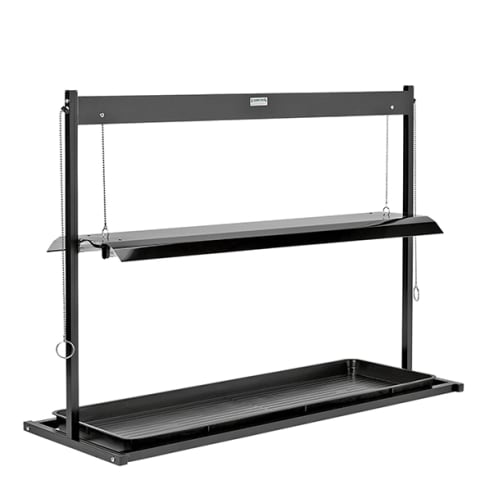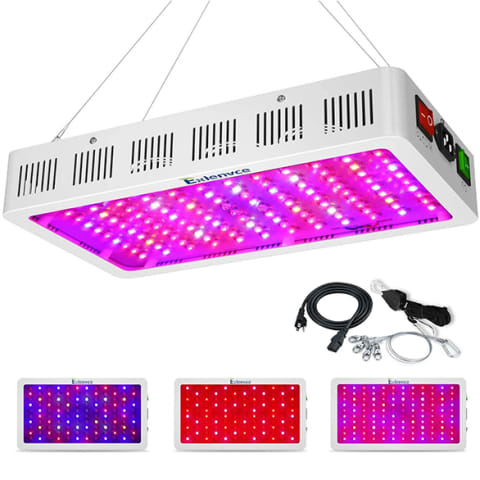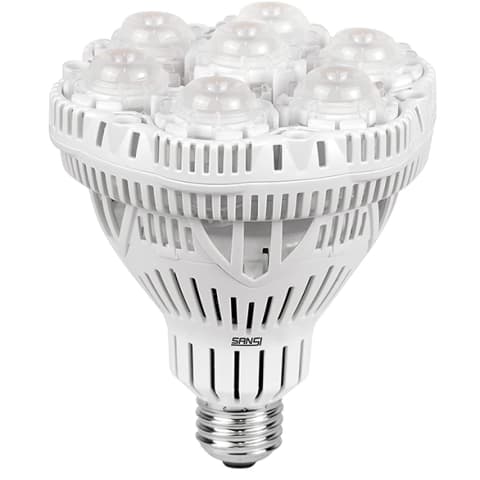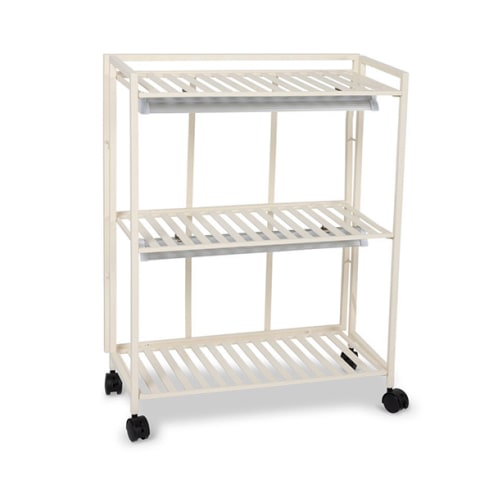“Grow lights let indoor growers of any scale bring the right spectrum of light to their plants,” says Roger Buelow, the chief technology officer at AeroFarms, a high-tech vertical farming company that grows produce indoors year-round. “Technically, plants don’t need sunlight. They need the appropriate spectrum of light,” he explains, adding that plants are actually quite choosy in this regard. Their chloroplasts only conduct photosynthesis for a narrow bandwidth of light, which a grow lamp can deliver. Grow lights also give off less heat than traditional light sources, making them less likely to scorch your plants. You can use grow lights to start seeds indoors before spring, care for outdoor plants that have moved inside for the winter, or grow plants indoors all year long. They can also act as stand-in windows for those who live in darker homes and need some help keeping sunlight-loving houseplants alive. “They do not provide a specialized color range like some of the LED lights, but they can be used on all manner of plants efficiently,” Kevin Espiritu, the founder of Epic Gardening, tells mbg. “I especially like them for seed-starting and microgreens, but they work just as well for indoor houseplants in need of a little extra light.” They come in a variety of sizes, from extremely small to industrial-level huge, giving green thumbs plenty of options to choose from. They also contain mercury, making them impossible to recycle and potentially dangerous if shattered. Fluorescents have a much shorter life span than LEDs, so if you anticipate running your bulbs year-round, they’re probably not the best option for you. “If you are growing plants to maturity indoors, you may need full-spectrum LED lighting instead,” says Angela S. Judd, master gardener and author of How To Grow Your Own Food. “The benefit of LED lights for your plants is that it offers a full spectrum of lights, including blue light, which promotes the chlorophyll and leaf production in leafy vegetables and herbs; and red light, which benefits the blossom production of flowering or fruiting plants,” Allison Vallin Kostovick, the organic gardener behind Finch & Folly farm, tells mbg. AeroFarms chose to go with LEDs to power their operations because they allow them to get granular with the spectrum, intensity, and frequency of light they give each crop. “LEDs have a much longer life span and are more energy-efficient than fluorescent bulbs,” Buelow adds. This means that although they’re more expensive up front, they’ll pay for themselves over time if you use them enough. The range of colors that some LEDs give off—bright blues, reds, and purples—aren’t for everyone. Some consider LEDs too distracting and unappealing for home use. 6500K 2FT T5 HO Fluorescent Grow Light, VIVOSUN ($81) 9 Dimmable Levels Grow Light, EZORKAS ($20) Tabletop Sunlite® Garden, Gardener’s Supply Co. ($299) 1500W LED Grow Light, EXLENVCE ($98) LED Full Spectrum Grow Light Bulb, SANSI ($30) Agrobrite FLT48 T5 Fluorescent, Hydrofarm ($278) Oslo 2-Tier LED Grow Light Garden ($289) Emma received her B.A. in Environmental Science & Policy with a specialty in environmental communications from Duke University. In addition to penning over 1,000 mbg articles on topics from the water crisis in California to the rise of urban beekeeping, her work has appeared on Grist, Bloomberg News, Bustle, and Forbes. She’s spoken about the intersection of self-care and sustainability on podcasts and live events alongside environmental thought leaders like Marci Zaroff, Gay Browne, and Summer Rayne Oakes.


